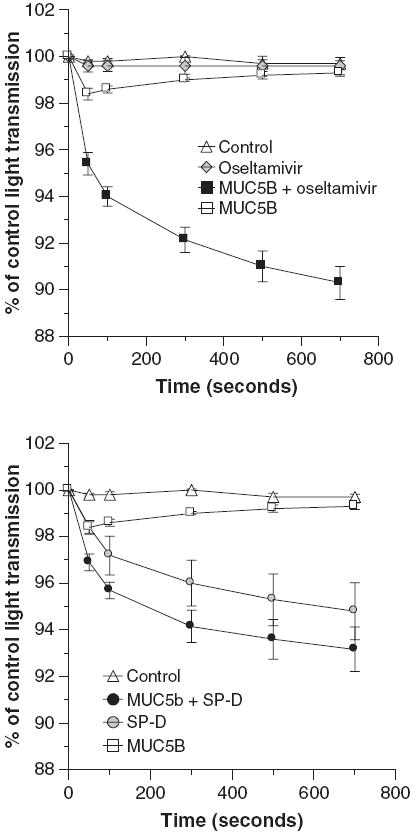Fig. 5.

Oseltamivir and surfactant protein D (SP-D) have cooperative viral aggregating activity when combined with MUC5B. Viral aggregation was assessed by decreases in light transmission through a stirred suspension of Phil82 influenza A virus. The left panel shows the effect of adding oseltamivir (1 μg/ml) to MUC5B and the right panel the effect of adding SP-D (0.2 μg/ml) to MUC5B in this assay. MUC5B alone (8 μg/ml) caused a significant decrease in light transmission after 50 and 100 s but it was no longer different from control after that (n = 5; P < 0.05 compared to control at 50 and 100 s). Oseltamivir alone did not cause any aggregation but markedly potentiated the effect of MUC5B (significant at all time-points by analysis of variance). SP-D caused aggregation on its own and also increased activity of MUC5B. The combination of MUC5B and SP-D was significantly greater than MUC5B alone but not than SP-D alone by analysis of variance.
